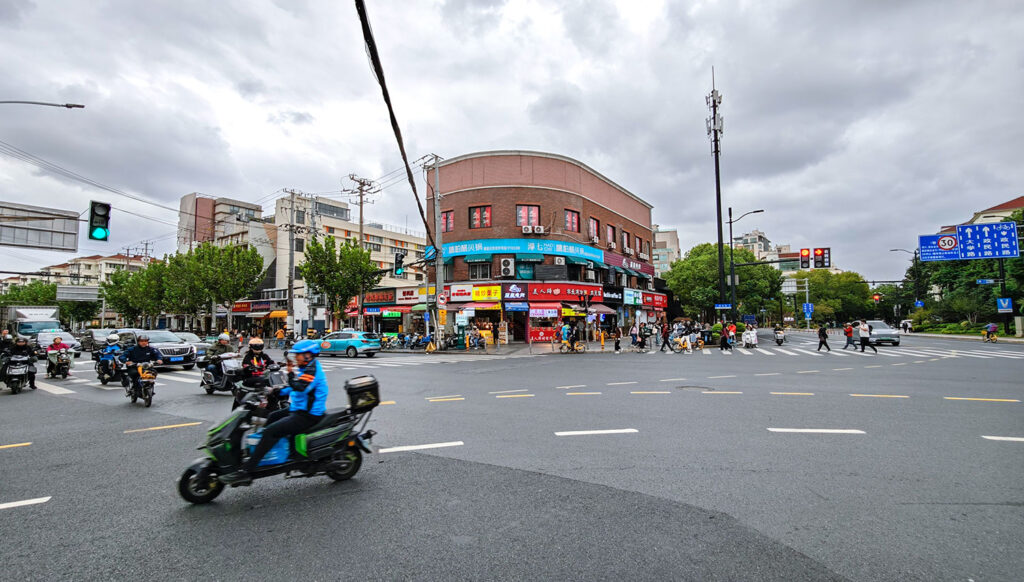Nowadays every generic brand video wants to remind us that ‘we live in times of change’, and startups love to tell us about Moore’s law and exponential growth, and how the smartphones we have now are a million times more powerful than NASA’s computers with which it landed Apollo 11 on the moon in 1969, and that forty years from now, computers will again be a million times faster and smaller than what we have today.
This high rate of change is the result of an economy fuelled by banks and venture capitalists, who hold a belief that the future will be better than the present, and that as such invested money will only grow. This is mostly true. But it has put lots of pressure on short term growth, and as such lifecycles have shortened for nearly everything; the time we work in one company, the lifespan of the products we buy; and the relationships we have with others.
Within this change, brands are ever more important. New products are added, models are replaced, or copied by competitors. The brand is the only constant, a stable lifebuoy. This is why new innovations such as the Amazon Echo are launched as brands, rather than products. You can’t copy a brand. (Sometimes even existing products such as chocolate are launched as a new brand with a totally different utility, such as After Eight.) Retail stores continue to be diminished by the gain of Amazon, Alibaba and Google, and when people want new a new pair of Nike Air Max’ or Adidas Superstar’s, they’ll just pick the cheapest or fastest option. The brand is more and more what people look for, not the retailer.
So what’s the value of a brand? Dissecting it is a messy job, a whole amalgamated blend of abstract and concrete values, based on a company’s product quality and its reputation and many other factors. It’s easier to look at the top brands. Apple’s total value is $752 billion, and roughly one-third of it is in its brand ($235 billion). But you don’t have to be a stock-listed Silicon Valley enterprise to make use of a brand. My mom drives eight kilometers to buy bread in another town because that bakery has a great reputation (and great buns).
Brand reputations are slow to change. If Starbucks were to stop all their advertising budget, it would have very little impact on its sales. On the immediate term at least. But the other side of this coin is that since brand reputations are slow to change, they’re expensive to build and their short term benefits difficult to see.
Before KesselsKramer, I worked at an energy company called Vandebron, and I’ve seen how difficult it is to fight the scepticism of brand value and justify the cost of advertising within a company. I wasn’t clever enough to understand how brand value works, nor articulate enough to emphasise on it.
Vandebron launched in early 2014, and started investing in its brand by doing some PR efforts around its launch and a small TV and radio campaign in the same year. This was followed by a more elaborate TV campaign in the summer of 2015. This campaign was a flywheel for other channels, such as street sales, which sales thrived during and in the months after the campaign. Social media engagement was higher than its competitors, and post-campaign research showed the commercials received a positive rating by 76% of its viewers, and the switching intend was the highest in the market.
But that dropped in the fall of that year, a few months after the TV ads went off the air, and looking back, direct website signups relating to the broadcasting of the ads were hard to spot.
I knew that mass media campaigns rarely lead to direct signups, but I didn’t realise that nearly all advertising that focusses on brand instead of discounts often has very little effect on the short term, and to measure its effect in the timespan of two months is difficult. So perhaps unsurprisingly, voices within Vandebron were keen on pointing out that the advertising budget divided by the amount of new customers, clearly showed an outrageous cost-per-new-customer. The fact that the advertising helped to build a brand which would allow Vandebron to charge a premium price to new customers (as it was doing) was completely ignored.
And so instead — eager for continued short term growth — Vandebron’s ‘growth’ budget was spend on promotions. It took to online comparison websites, and with a discounted offer it took thousands of new consumers onboard with a one year energy contract. These joined Vandebron mainly for its lower price, not for the company or brand or vision behind it. And so a year later, these customers left as soon as their contract expired for a newer and cheaper deal at another energy company.
While the cost-per-new-customer through these comparison websites was initially much lower the new customers from during the TV campaign, they left no lasting value to the company, whereas those who joined during the TV campaign did. Not just did these customers stay longer at Vandebron (providing more revenue) the TV campaign also created brand value which had may have withered a year later, but had not totally disappeared. (Thinkbox estimates that less than half of advertising’s profit impact happens in the short term.)
But it’s impossible for a company backed by venture capital to have a shrinking amount of customers, especially one looking for new investors. And so the comparison website consumers, who left by the hundreds, had to be replenished quickly. The solution; more comparison website discounts. This created a vicious circle that massively hindered long term growth for the brand, flattening its customer base numbers, and hollowing out the advertising budget.
There’s an example in Stephen King’s ‘Developing New Brands’, in which this promotional approach is compared to maintaining a premium price. King shows the case of two leading toiletpaper brands in the UK: Andrex and Delsey. In 1956 both companies had a roughly equal quality, price and market share in terms of sales and reputation, the latter being the result of long term advertising efforts. Both companies steadily continued to grow at an equal rate, but around 1965, retailers raised pressure on both brands to lower their price, or they’d be taken out of the shelf. Both brands did lower their prices, but to mitigate their lower sales margins, both brands took a different approach.
Delsey mainly saved on its advertising budget, and intensified its amount of discounts and promotions. They increasingly cut their own price, lowering their margin, and come 1966, it basically stopped advertising. Meanwhile, Andrex kept advertising, albeit at a lowered rate than before the price cut, and they did a minimal amount of discounts and promotions.
Fast forward to 1969, and Delsey had lost marketshare, which went to cheaper brands of toilet paper. Andrex steadily continued to grow, and because of its brand value, it could keep charging a slightly higher price. And with a higher margin, it could maintain its advertising, creating a vicious circle; a positive one.
Delsey’s and Andrex’ products didn’t change. Their paper didn’t become softer, whiter or perfumed. The difference was their brands lost or gained value, and that consumers valued Andrex more than Delsey.
The emphasis on a brand and milking the premium price can also go wrong, with Gillette being a prime example. For decades it led the razor market, and kept reinforcing its brand value through adding features to its products, and advertisements that starred Roger Federer, Thierry Henry and Tiger Woods. It also kept raising its price. Tom Russo on MOI Global writes: “The price paid for the Gillette razors was so high they had to keep them locked up behind the checkout counter. If you’re trying to sell fast-moving consumer products, the goal isn’t to lock them up.” Gillette fell for the shortism approach by overpricing, but consumers eventually had enough of paying $19.50 for a four-pack of Fusion cartridges, which feature five blades each. It led to the advent of competitors Harry’s (who’s slogan is ‘Fair Prices. Simple.’), and Dollar Shave Club (‘Shave and Grooming Made Simple’). Gillette lost market share for six years straight, tumbling from 70% in 2010 to 54% in 2016.
That is not to say Vandebron could have solely relied on TV ads or premium prices. The best approach would have been a balance, with mass media advertising campaigns focussed on building the brand for long term growth, supported by specific short term promotions to provide sales and keep momentum, without cheapening down the brand. Airbnb’s and Uber’s referral tactics are a perfect example of how promotions can help sales, and at the same time not hurt the long term growth of a brand. Les Benit and Peter Field in ‘The Long and Short of It’, suggest that around for maximum effectiveness, 60% of advertising budget should be spend on brand-building activity, and 40% on sales activation. As Stephen King aptly puts: “Advertising responses can be ‘direct or indirect’, which is to say advertising either sells or makes something sellable.” You need both. Sales activation without discounting is tricky to do in the energy market, but online comparison websites should have been a last resort. Focussing on short term only is like slaying the goose for the golden egg. To keep feeding the goose in a market that focusses on short term growth, well, it’s a great challenge.




